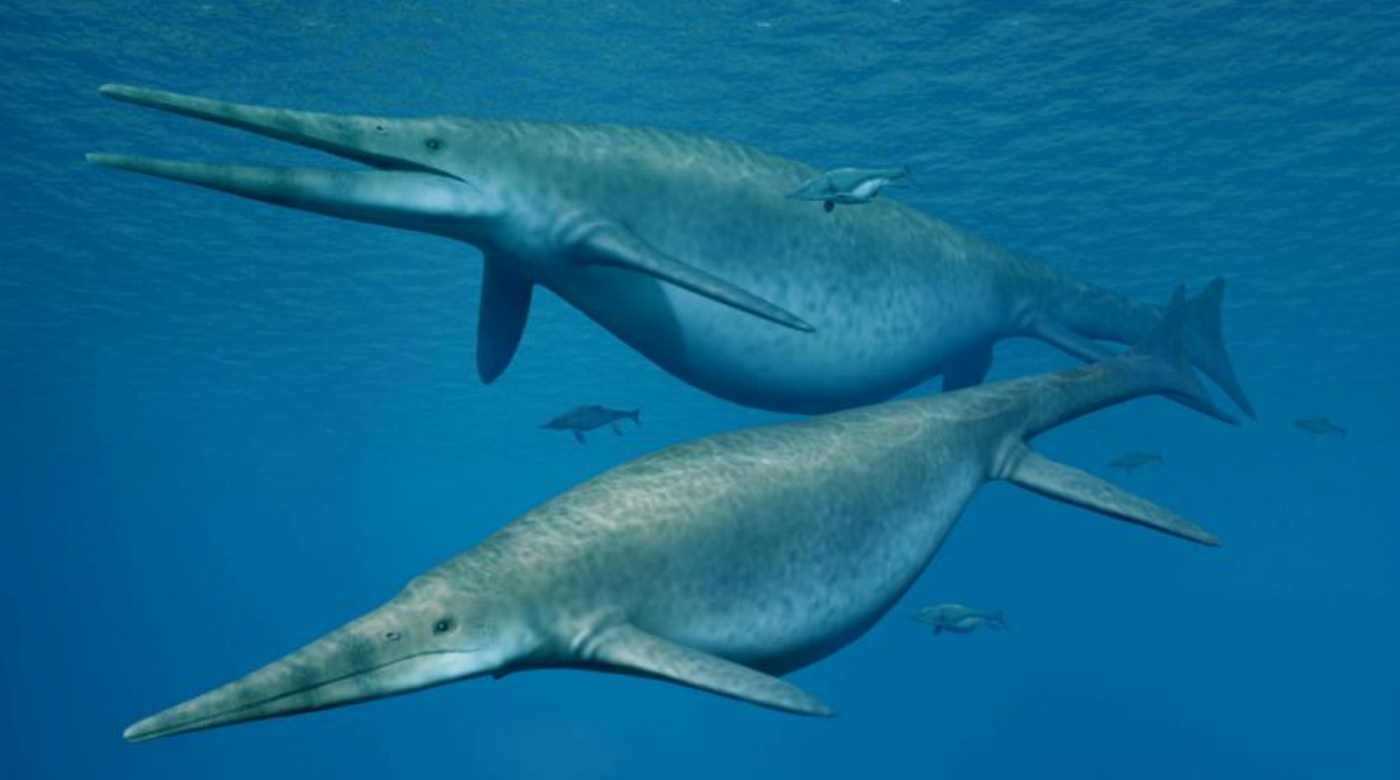Remains of ‘largest ever’ prehistoric sea monster found in UK
Experts believe giant ichthyosaur may have been as long or even longer than blue whale

The remains of what experts believe may be the largest sea monster known to science have been discovered on the shore of the Bristol Channel.
The find is believed to be the jawbone of a giant ichthyosaur that, scientists estimate, “may have measured up to a whopping 85 feet long - approaching the size of some blue whales, the largest animal ever known to exist”, says Newsweek.
Ichthyosaurs were dolphin-like marine reptiles “that roamed the seas during the age of the dinosaurs”, the website adds.
The Week
Escape your echo chamber. Get the facts behind the news, plus analysis from multiple perspectives.

Sign up for The Week's Free Newsletters
From our morning news briefing to a weekly Good News Newsletter, get the best of The Week delivered directly to your inbox.
From our morning news briefing to a weekly Good News Newsletter, get the best of The Week delivered directly to your inbox.
The broken jawbone fossil was found on the coast of Lilstock, Somerset, by collector Paul de la Salle, who has co-authored a new study describing the fossil that has been published in the journal PLOS One.
Following the discovery, in May 2016, De la Salle contacted Dean Lomax, a palaeontologist at Manchester University, who realised the significance of the fossil.
“Seeing it in person for the first time, my jaw just hit the floor,” Lomax said.
Because the new specimen is only represented by a piece of the jaw bone, it is difficult to work out the exact size of the creature. However, Lomax explains that using a simple scaling factor, researchers estimate that the Lilstock specimen is about 25% larger than those found previously.
A free daily email with the biggest news stories of the day – and the best features from TheWeek.com
Some have been much smaller than the newly discovered specimen. In 2016, a near-complete ichthyosaur skeleton measuring 13ft in length was found off the coast of Scotland.
“Of course, such estimates are not entirely realistic because of differences between species,” Lomax said in a statement. “Nonetheless, simple scaling is commonly used to estimate size, especially when comparative material is scarce.”
Biology textbooks “have long touted the modern blue whale as the largest animal that ever lived, but this and other fascinating fossil finds hint that there may once have been even bigger creatures swimming Earth’s seas”, says National Geographic.
The blue whale, which can grow to up to 98ft long, is the biggest animal alive today.
-
 Alaa Abd el-Fattah: should Egyptian dissident be stripped of UK citizenship?
Alaa Abd el-Fattah: should Egyptian dissident be stripped of UK citizenship?Today's Big Question Resurfaced social media posts appear to show the democracy activist calling for the killing of Zionists and police
-
 Biggest political break-ups and make-ups of 2025
Biggest political break-ups and make-ups of 2025The Explainer From Trump and Musk to the UK and the EU, Christmas wouldn’t be Christmas without a round-up of the year’s relationship drama
-
 Why 2025 was a pivotal year for AI
Why 2025 was a pivotal year for AITalking Point The ‘hype’ and ‘hopes’ around artificial intelligence are ‘like nothing the world has seen before’
-
 How Bulgaria’s government fell amid mass protests
How Bulgaria’s government fell amid mass protestsThe Explainer The country’s prime minister resigned as part of the fallout
-
 Femicide: Italy’s newest crime
Femicide: Italy’s newest crimeThe Explainer Landmark law to criminalise murder of a woman as an ‘act of hatred’ or ‘subjugation’ but critics say Italy is still deeply patriarchal
-
 Brazil’s Bolsonaro behind bars after appeals run out
Brazil’s Bolsonaro behind bars after appeals run outSpeed Read He will serve 27 years in prison
-
 Americans traveling abroad face renewed criticism in the Trump era
Americans traveling abroad face renewed criticism in the Trump eraThe Explainer Some of Trump’s behavior has Americans being questioned
-
 Nigeria confused by Trump invasion threat
Nigeria confused by Trump invasion threatSpeed Read Trump has claimed the country is persecuting Christians
-
 Sanae Takaichi: Japan’s Iron Lady set to be the country’s first woman prime minister
Sanae Takaichi: Japan’s Iron Lady set to be the country’s first woman prime ministerIn the Spotlight Takaichi is a member of Japan’s conservative, nationalist Liberal Democratic Party
-
 Russia is ‘helping China’ prepare for an invasion of Taiwan
Russia is ‘helping China’ prepare for an invasion of TaiwanIn the Spotlight Russia is reportedly allowing China access to military training
-
 Interpol arrests hundreds in Africa-wide sextortion crackdown
Interpol arrests hundreds in Africa-wide sextortion crackdownIN THE SPOTLIGHT A series of stings disrupts major cybercrime operations as law enforcement estimates millions in losses from schemes designed to prey on lonely users